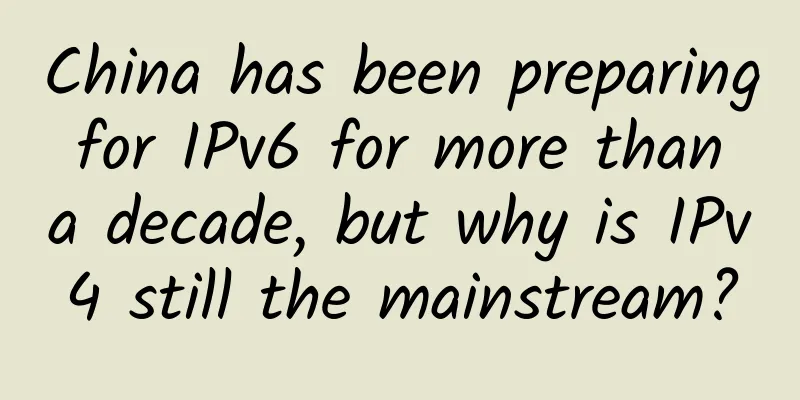The competition among the four major data center host network virtualization technologies

|
Since it is the virtualization of the host network, it actually means to realize the virtualization of network functions on the server. The main proposers of this technology are server manufacturers, who hope to use this technology to expand the influence of servers in the data center, thereby weakening the functions of network devices. When it comes to virtualization, the first thing that comes to mind must be VMware, a manufacturer that specializes in host, especially server virtualization technology research. VMware has long monopolized the market for host virtualization technology, once occupying up to 90% of the market share. With the entry of other software manufacturers, the share has gradually decreased, but it is still the leader in virtualization technology. Today's virtualization technology is no longer limited to the virtualization of server operating systems, including application software virtualization, network virtualization, storage virtualization, etc. It can be said that virtualization technology has gradually penetrated into every technical field of the data center. In addition to servers, VMware's virtualization in the fields of network, storage, security, etc. is not strong. Many new virtualization manufacturers have emerged, which has also made the virtualization market full of competition. Some traditional IT giants have also joined this competition. This article is going to talk about a category in virtualization technology: host network virtualization technology, that is, to achieve network virtualization through server hosts, which may be a bit confusing. In fact, everyone knows that servers have network cards and can configure some simple routing and forwarding entries. Server manufacturers hope to achieve network virtualization by optimizing server network functions. Since it is the virtualization of the host network, it actually means to realize the virtualization of network functions on the server. The main proposers of this technology are server manufacturers, who hope to use this technology to expand the influence of servers in the data center, thereby weakening the functions of network equipment. Of course, network equipment manufacturers will not agree. Network manufacturers also have their own virtualization technology, which emphasizes the implementation of hardware and hardware-based virtualization. In contrast, host network virtualization technology is relatively soft. In this way, the implementation of host network virtualization technology is more flexible, but the forwarding efficiency is low, while the virtualization realized by network manufacturers has high forwarding efficiency, but is not flexible enough and depends more on the hardware process level. In any case, host network virtualization technology as a virtualization technology will exist for a long time. Let's talk about the four major technical characteristics of host network virtualization technology in detail. VXLAN VXLAN (Virtual Extensible LAN) is a network virtualization technology proposed by Cisco, VMware, Citrix, Broadcom and other companies. These companies are currently the most powerful combination in the field of network and virtualization. Therefore, VXLAN is currently the most comprehensive and practical technology. VXLAN is a tunnel forwarding mode that encapsulates Ethernet messages on the UDP transport layer. The destination UDP port number is 4798. 24 bits are used to identify the second-layer network segment. VXLAN can deploy millions of virtual networks in a data center. VXLAN encapsulates unknown unicast, broadcast, multicast and other network traffic as multicast forwarding. The physical network is required to support any source multicast. The VXLAN packet format is easy to implement in hardware, so it can be more closely integrated with physical network devices in the future. Taking advantage of the high forwarding efficiency of hardware, VXLAN can be implemented through hardware. VXLAN uses the existing common UDP transmission and has the highest maturity, so it has been widely recognized by data centers and is currently the most popular network virtualization technology. DOVE DOVE (Distributed Overlay Virtual Ethernet) is a distributed overlay virtual Ethernet technology proposed by IBM. It will allow engineers to abstract the physical network infrastructure from the hypervisor host so that they can make network changes in software instead of hardware. These network instances will better manage and support virtual machines as they migrate within and between data centers. DOVE deployment is already supported in IBM's DVS5000V product. DOVE's protocol definition is almost the same as VXLAN, which also allows DOVE to support any underlying network hardware of VXLAN. Unlike VXLAN, DOVE does not require physical infrastructure multicast to run when creating an overlay, while VXLAN requires multicast. No one in the data center wants to use multicast because it will affect network performance. DOVE can be used in vSphere, KVM, and Hyper-V. Now that IBM has sold its mid- and low-end servers to Lenovo, and wants to transfer its chip business, in this context, the future prospects of DOVE are not very clear. Without the advantage of IBM's traditional server market, it is difficult for DOVE to be widely used. NVGRE NVGRE (Network Virtualization using GRE) is a general routing encapsulation standard proposal submitted to IETF by Microsoft, Intel, Dell, HP, etc. NVGRE can support 16 million networks by defining a 24-bit leased network identifier. NVGRE uses GRE to create an independent virtual Layer 2 network, limiting the physical Layer 2 network or extending beyond the subnet boundary. NVGRE requires physical network devices to be able to identify the extended information of the GRE tunnel, and unknown unicast, broadcast, multicast and other network traffic are all encapsulated as multicast forwarding. RFC 2784 and RFC 2890 detail the implementation standards of NVGRE. Compared with VXLAN, NVGRE does not explain in detail how the data packet finds the target terminal through the channel, and is not as clear as the standard description of VXLAN. STT STT (Stateless Transport Tunneling) is a host network virtualization technology proposed by VMware. STT uses the data encapsulation form of TCP, but transforms the transmission mechanism of TCP. Data transmission does not follow the TCP state machine, but a newly defined stateless mechanism. There is no need for a three-way handshake to establish a TCP connection. It has been implemented in vSwitch. STT uses 64 bits to identify the second-layer network segment. The endpoint of STT needs to reserve a TCP port for STT. All TCP packets sent to this port will be considered STT packets, and will not follow the normal TCP path. The above four host network virtualization technologies have a common feature: they all perform secondary encapsulation on the basis of Layer 2, and the difference lies in the different encapsulation modes and lengths. VXLAN and DOVE are both based on UDP encapsulation, NVGRE is based on GRE encapsulation, and STT is based on TCP encapsulation. Only UDP is the most acceptable method. Except for DOVE, the other three are implemented through multicast, and the forwarding efficiency is not as high as DOVE. However, since DOVE is IBM's exclusive density and is only implemented on its own equipment, the compatibility is not very good, so it has not received enough attention. Regardless of which virtualization technology is used, the purpose is to expand the scope of the Layer 2 network. The traditional Layer 2 VLAN has only 4094 identifiers, which can no longer meet the deployment requirements of data center services. Therefore, these host network virtualization technologies have emerged. For some small and medium-sized networks, there is no need to use such technologies. Traditional VLAN technology is still sufficient and not outdated. In the future, these four technologies will continue to be modified and improved. Although VXLAN is temporarily ahead, it is still unknown who will reach the finish line first. Let us wait and see. |
<<: 48V AC direct supply technology is the future development direction of data centers
>>: Will cloud computing lead to the demise of large data centers?
Recommend
DesiVPS: $25/year KVM-2GB/40GB/1Gbps unlimited traffic/Los Angeles data center, free IP change 3 times a year
DesiVPS has just sent out the latest promotional ...
This year we have seen the rapid and joint development of artificial intelligence and 5G
For the first time, RedMonk replaced Java in the ...
What attacks can hackers launch using TCP/IP?
TCP/IP is the most basic communication protocol o...
Maker Beijing 2020 Kunpeng Application Innovation Competition ushered in the finals, and the selection results attracted much attention
[[338791]] At 13:00 on the afternoon of August 20...
CUBECLOUD Christmas 12% off, Hong Kong/Los Angeles CN2 GIA line VPS monthly payment starts from 60 yuan
I received a Christmas and New Year promotion fro...
Four tips for network capacity planning and configuration
When designing an enterprise network, there is a ...
The future development trend of the Internet will transition from HTTP to IPFS
We know that IPFS is a new Internet underlying pr...
SpringCloud Alibaba Microservices Practice: Gateway Authorization VS Microservices Authorization
[[386274]] This article is reprinted from the WeC...
TCP: Three-way handshake and four-way wave, no blind spot answer in the interview
picture What is TCP Before understanding the thre...
What is the current status of 6G and when will it arrive?
6G will bring many improvements in many areas, bu...
The WiFi at home is stuck again. Who is using it for free? Here are 4 tips to make freeloaders cry!
The Wi-Fi at home is stuck again. Who is using it...
Unleashing the power of 5G: Innovative devices will revolutionize connectivity
There’s no denying that the advent of 5G technolo...
The 5G vision has not yet been fully realized, but 6G is coming?
◎ Science and Technology Daily reporter Liu Yan O...
Huawei Enjoy 10S, the year-end flagship phone worth 1,000 yuan, is officially released with full screen and camera upgrades
As the year draws to a close, the smartphone indu...
5G is still a long way off, but some people are already discussing 6G
It often takes many years for network technology ...









